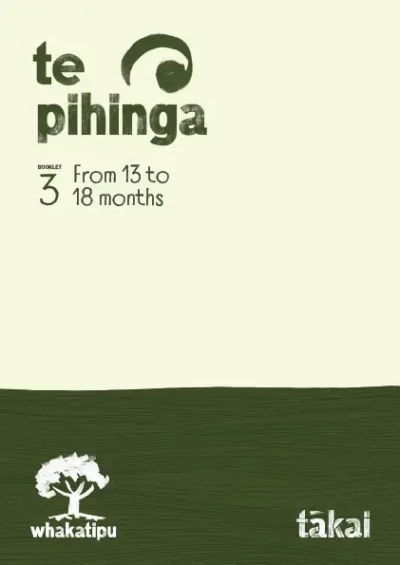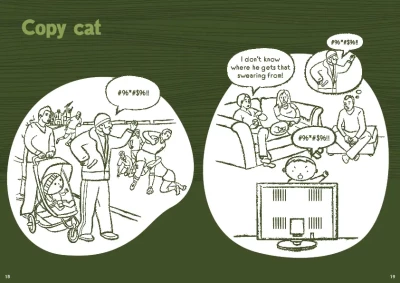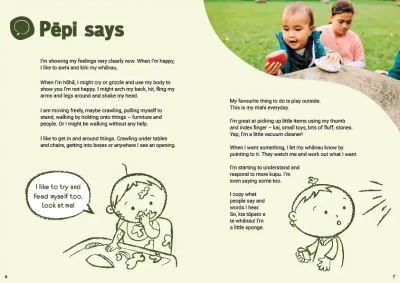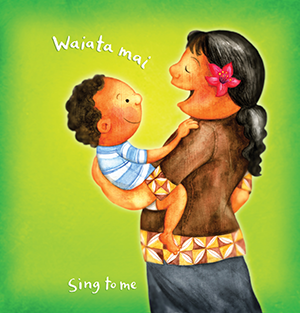
Language development
A baby learns language by being talked with. Lots of repetition of words as they observe and play, and responding to their attempts with the correct words helps.
A baby learns language by hearing people talk with them, and parents can encourage language development by repeating the sounds their baby makes.
Children who live in a language-rich environment where they are often talked to, sung to and read to are likely to have stronger language skills.
However, each child will learn at their own pace.
In the Whakatipu Te Pihinga 3 (page 7), pēpi says: 'I’m starting to understand and respond to more kupu (words). I’m even saying some too.'
Ask whānau:
- What have you noticed about your child’s understanding of language?
How do you think they learned about that?
Learning more than one language
Babies and small children will learn any language that they hear often. The very early years are an optimal time to teach a child many languages — they have the capacity to learn them all.
However, it does require plenty of repetition to make those connections in the language centres of their brain, and to form pathways for understanding words (receptive language).
Expressing themselves
Making sounds and saying words is called expressive language. At this stage, children sometimes make the start of a word or the end of a word. For example, they might say ‘k’ when they see the cat, and if parents respond with "Yes! Cat! Cats say, 'Meow’", their child will be encouraged to try again.
- How is your child trying to communicate?
- What have you noticed them doing or saying?
Copy cat
Because copying is one of the most powerful ways a child learns, whānau might want to review not only what they see but the words their child hears. Look at the ‘Copy cat’ cartoon in Te Pihinga 3 (pages 18 and 19) with the parents.
- What do you think is the message in this cartoon?
- What experiences have you had similar to this?
Pointing helps
Babies will use pointing to let whānau know what they want – this is another way they’re communicating. And it can really help parents understand what their child is trying to communicate.
Parents can use pointing too. When they share books, they can point and say what the picture is. This helps to build the child’s vocabulary.
Hearing the word and learning what it means happens first – sometime later, the child will try saying the word themselves.
Have you noticed your child pointing to communicate?
Ideas for whānau
Here’s a list of ideas to share with whānau that encourage their child to express themselves using words.
- Talk with their child often.
Immerse them in the language of their people. If a child grows up in a family where more than one language is spoken, they’re well-placed to learn each of those languages. It helps the child if one person sticks to the one language they speak best.
- Respond to them when they try to communicate – this will encourage them to keep trying.
- Use ‘parallel talk’ as they play – saying what the child is doing as they are doing it. They’ll hear and learn the words that go with what they’re looking at and playing with.
- Use ‘self-talk’ – the adult describes what they themselves are doing, as they’re doing it.
- If the child says a word that’s not quite right, adults can encourage them by smiling and agreeing with them and then repeating their word back to them correctly. This way the child gets to hear the right pronunciation without feeling corrected.
- When a child gestures and makes sounds, adults can respond by saying, ‘You want a … ?’
- Share books together often, letting them explore the book the way they choose while the adult talks about or reads the page they’re both looking at.
- Sing often – nursery rhymes, action songs, waiata and made-up songs.
- Label their world. Wherever they are – inside or outside – give them the names of things and talk about all they can see and hear, especially things that get their attention.
- For under-2-year-olds, watching television is unhelpful in developing their communication skills because the TV isn’t responsive to their efforts to talk – it doesn’t give feedback or converse.
Nothing beats spending time with a loving and trusted adult, talking face-to-face and sharing experiences together.
Helpful resources for whānau
-
Developing early speech and language skills<
Developing early speech and language skillsA short video giving advice on how to develop speech and language skills in young children.
-
Using parallel talk during book sharing<
Using parallel talk during book sharingA mum uses parallel talk as she shares a book with her toddler.
-
Twins talk the same language<
Twins talk the same languageWatch closely at these twins 'talking', they're actually having a turn-taking conversation! This shows how important it is to recognise and respond to the sounds children make.
-
Mā is White – Poppet Stars<
Mā is White – Poppet StarsSongs help language development. This video shows how even a second language can be learned, teaching children the basic colours in te reo Māori.
 pdf 11 MB
pdf 11 MB














